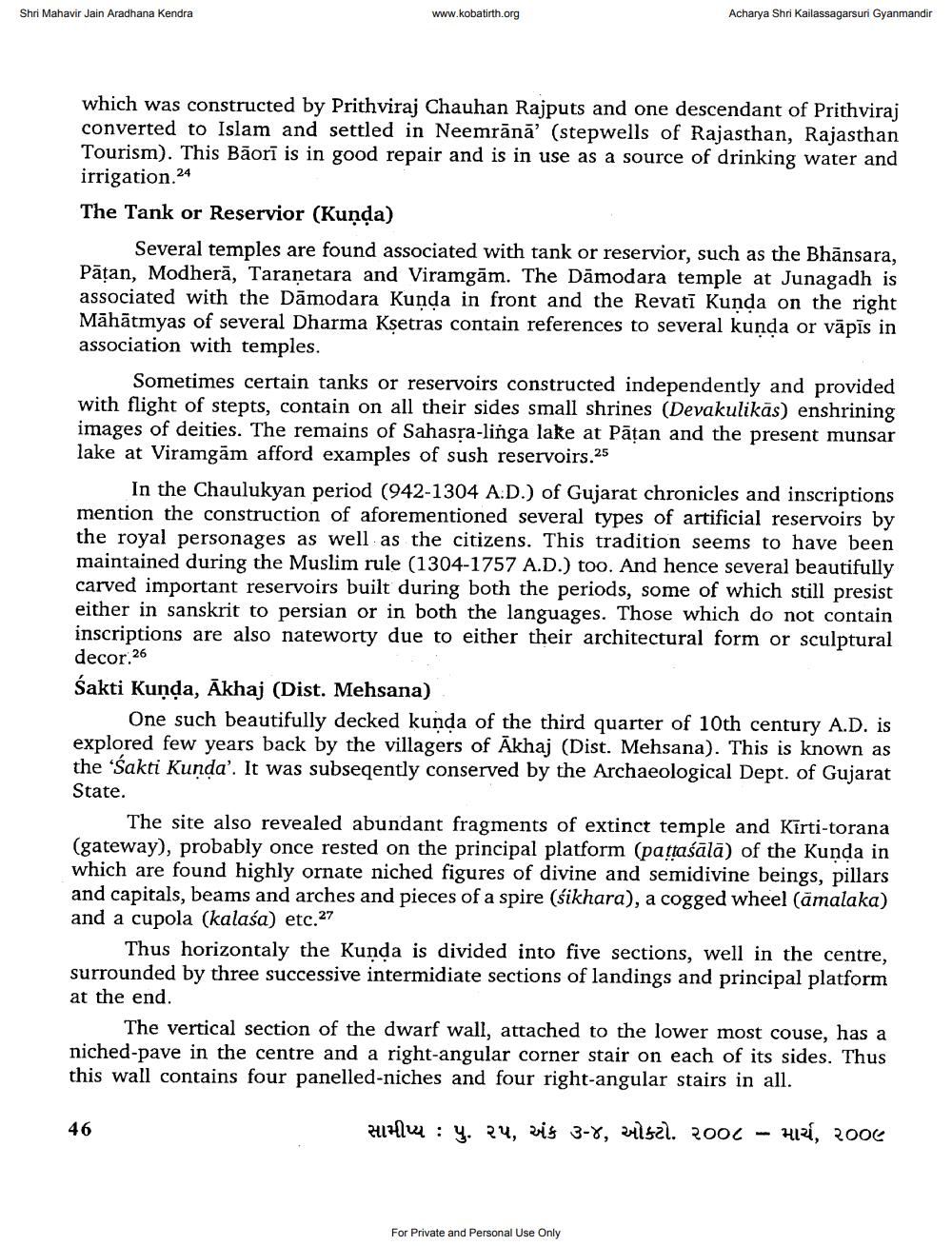________________
Shri Mahavir Jain Aradhana Kendra
www.kobatirth.org
which was constructed by Prithviraj Chauhan Rajputs and one descendant of Prithviraj converted to Islam and settled in Neemrana' (stepwells of Rajasthan, Rajasthan Tourism). This Bāori is in good repair and is in use as a source of drinking water and irrigation.24
The Tank or Reservior (Kunda)
Several temples are found associated with tank or reservior, such as the Bhānsara, Pātan, Modherä, Taranetara and Viramgam. The Damodara temple at Junagadh is associated with the Damodara Kunda in front and the Revati Kunda on the right Mähätmyas of several Dharma Kṣetras contain references to several kunda or vapis in association with temples.
Acharya Shri Kailassagarsuri Gyanmandir
Sometimes certain tanks or reservoirs constructed independently and provided with flight of stepts, contain on all their sides small shrines (Devakulikās) enshrining images of deities. The remains of Sahasra-linga lake at Päțan and the present munsar lake at Viramgåm afford examples of sush reservoirs.25
In the Chaulukyan period (942-1304 A.D.) of Gujarat chronicles and inscriptions mention the construction of aforementioned several types of artificial reservoirs by the royal personages as well as the citizens. This tradition seems to have been. maintained during the Muslim rule (1304-1757 A.D.) too. And hence several beautifully carved important reservoirs built during both the periods, some of which still presist either in sanskrit to persian or in both the languages. Those which do not contain inscriptions are also nateworty due to either their architectural form or sculptural decor.26
Sakti Kunda, Akhaj (Dist. Mehsana)
One such beautifully decked kunda of the third quarter of 10th century A.D. is explored few years back by the villagers of Äkhaj (Dist. Mehsana). This is known as the 'Sakti Kunda'. It was subseqently conserved by the Archaeological Dept. of Gujarat State.
The site also revealed abundant fragments of extinct temple and Kirti-torana (gateway), probably once rested on the principal platform (paṇaśala) of the Kunda in which are found highly ornate niched figures of divine and semidivine beings, pillars and capitals, beams and arches and pieces of a spire (śikhara), a cogged wheel (amalaka) and a cupola (kalasa) etc.27
Thus horizontaly the Kunda is divided into five sections, well in the centre, surrounded by three successive intermidiate sections of landings and principal platform at the end.
46
The vertical section of the dwarf wall, attached to the lower most couse, has a niched-pave in the centre and a right-angular corner stair on each of its sides. Thus this wall contains four panelled-niches and four right-angular stairs in all.
સામીપ્ય : પુ. ૨૫, અંક ૩-૪, ઓક્ટો. ૨૦૦૯ –
For Private and Personal Use Only
માર્ચ, ૨૦૦૯




